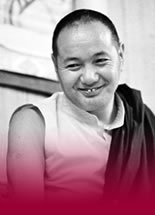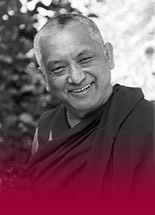Robina’s Blog
17 November, 2022
As far as the Buddha’s concerned, our mind, our consciousness, our capacity for cognition, is not physical, not the brain, not even a function of the brain. Nor is it the handiwork of a creator, like a soul, nor does it come from our parents. Without insulting neuroscientists, you could say that the brain is a physical indicator of what’s going on in the mind, although of course only at the grosser level, the level of the senses and conceptuality. Buddha asserts much subtler levels of mind that don’t depend upon the brain.
Clearly the mind and the body work together but they’re not the same. The entire Buddhist world view is based upon this assumption.
When I was working on Lama Zopa Rinpoche’s book called How to Face Death Without Fear, I read a book by an American medical journalist, Dick Teresi, called The Undead — it’s not about zombies! He’s a very funny fellow. His expertise is death and his book is all about the contradictions and problems and difficulties in the American medical profession now about exactly when death occurs, directly related to the whole business of cutting out people’s organs and giving them to other people.
For example, we know that all over the world, in every culture, you’re going to hear reports about people “coming back to life.” In other words, according to the medical profession the person is dead and they’re ready to cut out their liver but they most inconveniently come back to life! It can’t be explained in modern terms at all.
He has a whole chapter on what people call “out-of-body experiences” during their procedures in the hospital. They’re under anesthetic so no way can they be conscious, but people report vividly their awareness of what was going on, the things the doctors talked about during the procedure, etc. etc. He quotes one woman who had to have such a radical procedure that they had to stop virtually all her organs and no way could she be conscious, but she reported one of the vividest experiences of all! These experiences can’t be denied.
These reports fit perfectly with the Vajrayana view of how we’re constructed that says we have gross consciousness, which is our sensory consciousness; then subtle consciousness and very subtle consciousness. The subtle level is basically our mental states. We experience these in our dreams and while we’re in a coma or under anesthetic.
These states of mind are inextricably linked to equivalent levels of physicality. And at the subtlest level, the very subtle consciousness, or clear light consciousness, is one entity with the very subtle wind energy. They’re inseparable but they’re different. These are what go to the next life and form the basis of the new person’s body and mind, driven by the karma of the person.
I visited a friend in hospital a few times who was in a deep coma. I’d asked the students of two of the lamas to pray for her. When I was there I’d say prayers and mantras close to her and occasionally I’d say, “Judy, His Holiness Sakya Trizin is praying for you, Dzongsar Khyentse Rinpoche is praying for you.” I visited her again after she came out of her coma and she said the only thing she remembered from those weeks of unconsciousness was this husky voice saying exactly those words! She thought it was a blue lady who came through the window!
According to the Vajrayana, the death process is described in eight stages of gradual deconstruction of the components of a person. The fourth stage is when the breath stops and that, of course, is considered brain death. But that’s just the gross consciousness that’s ceased. Subtle mind, the mental consciousness, is still there.
So in just the same way that a person who’s dreaming or in a coma or under anesthetic, whose gross consciousness has temporarily stopped functioning, can be aware of what’s going on around them, so too can a person who’s brain dead and whose consciousness hasn’t left the body yet – it can take up to three days after the breath stops. Rinpoche goes into detail about this in his book. This is why it’s important to be quiet around the person after they’ve stopped breathing and to say prayers and do practices for them in their presence. This can help them hugely.
The Undead talked about one woman who was offering her organs. There she was on the operating table, dead as far as the doctors were concerned, and the nurse monitoring the heartbeat said that as soon as they got the circular saw ready to cut her open, the heart went from 100 to 200 beats a minute. Teresi wondered what a dead person has to be anxious about!
It's reasonable to deduce that she was having one of those out-of-body experiences (although, of course, the mind isn’t actually out of the body – if it were, the person would be dead. It’s just experienced like that).
Dick Teresi quoted one doctor in this profession as saying that he can say with certainty that consciousness is not a function of the brain – he said he can’t say what it is, but this much he can say.
And then of course there are the many experiences of great meditators staying in their bodies for days, weeks, even months after they’ve stopped breathing; Rinpoche quotes many in his book.
His Holiness said at a teaching I attended in Dharamsala that his friends in the scientific world have created some kind of machinery to do tests on these meditators to see if subtle consciousness can be detected. He joked that they need to make more machines because when a yogi dies in north India, by the time the machine gets back up from south India, the yogi has left his body!
So I think it’s marvelous that modern people are questioning their assumptions.

